Pedro Henrique Martins
EuroLLM-9B: Technical Report
Jun 04, 2025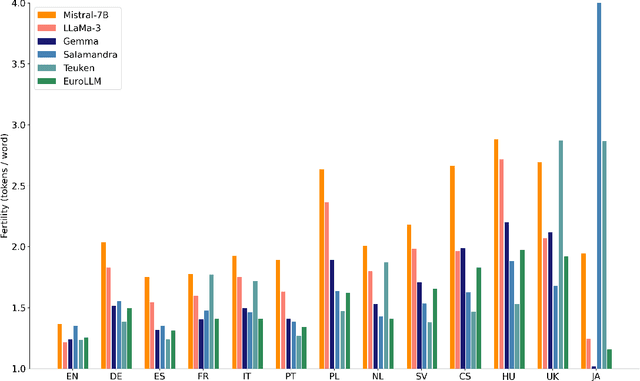
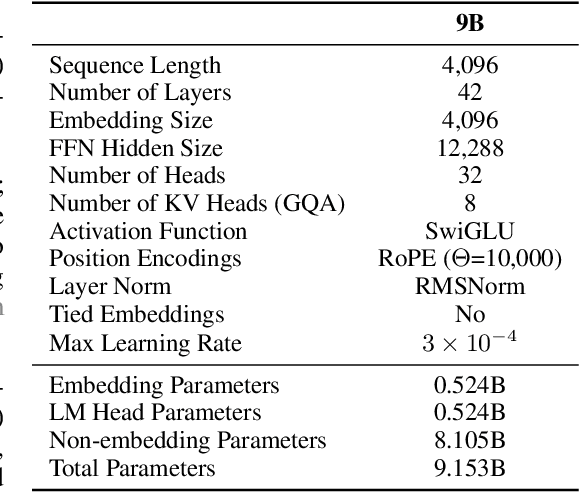
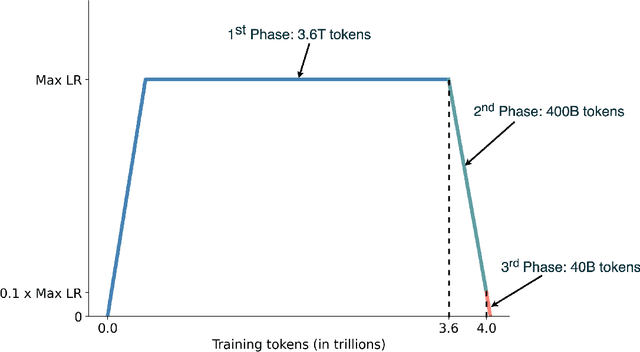
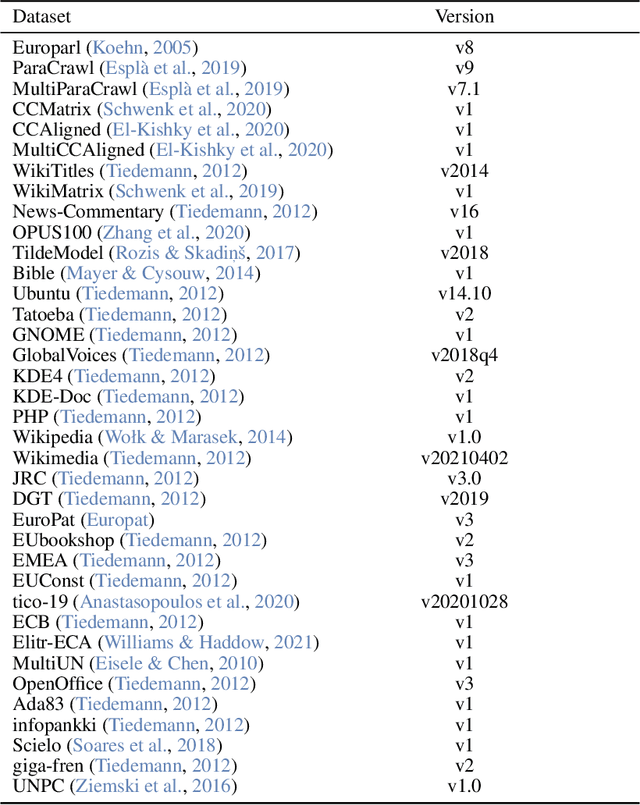
Abstract:This report presents EuroLLM-9B, a large language model trained from scratch to support the needs of European citizens by covering all 24 official European Union languages and 11 additional languages. EuroLLM addresses the issue of European languages being underrepresented and underserved in existing open large language models. We provide a comprehensive overview of EuroLLM-9B's development, including tokenizer design, architectural specifications, data filtering, and training procedures. We describe the pre-training data collection and filtering pipeline, including the creation of EuroFilter, an AI-based multilingual filter, as well as the design of EuroBlocks-Synthetic, a novel synthetic dataset for post-training that enhances language coverage for European languages. Evaluation results demonstrate EuroLLM-9B's competitive performance on multilingual benchmarks and machine translation tasks, establishing it as the leading open European-made LLM of its size. To support open research and adoption, we release all major components of this work, including the base and instruction-tuned models, the EuroFilter classifier, and the synthetic post-training dataset.
EuroLLM: Multilingual Language Models for Europe
Sep 24, 2024Abstract:The quality of open-weight LLMs has seen significant improvement, yet they remain predominantly focused on English. In this paper, we introduce the EuroLLM project, aimed at developing a suite of open-weight multilingual LLMs capable of understanding and generating text in all official European Union languages, as well as several additional relevant languages. We outline the progress made to date, detailing our data collection and filtering process, the development of scaling laws, the creation of our multilingual tokenizer, and the data mix and modeling configurations. Additionally, we release our initial models: EuroLLM-1.7B and EuroLLM-1.7B-Instruct and report their performance on multilingual general benchmarks and machine translation.
Bridging the Gap: A Survey on Integrating Feedback for Natural Language Generation
May 01, 2023


Abstract:Many recent advances in natural language generation have been fueled by training large language models on internet-scale data. However, this paradigm can lead to models that generate toxic, inaccurate, and unhelpful content, and automatic evaluation metrics often fail to identify these behaviors. As models become more capable, human feedback is an invaluable signal for evaluating and improving models. This survey aims to provide an overview of the recent research that has leveraged human feedback to improve natural language generation. First, we introduce an encompassing formalization of feedback, and identify and organize existing research into a taxonomy following this formalization. Next, we discuss how feedback can be described by its format and objective, and cover the two approaches proposed to use feedback (either for training or decoding): directly using the feedback or training feedback models. We also discuss existing datasets for human-feedback data collection, and concerns surrounding feedback collection. Finally, we provide an overview of the nascent field of AI feedback, which exploits large language models to make judgments based on a set of principles and minimize the need for human intervention.
Chunk-based Nearest Neighbor Machine Translation
May 24, 2022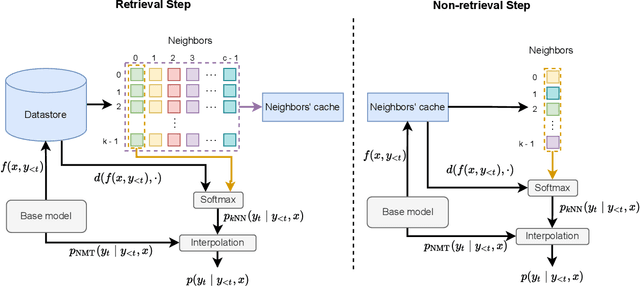


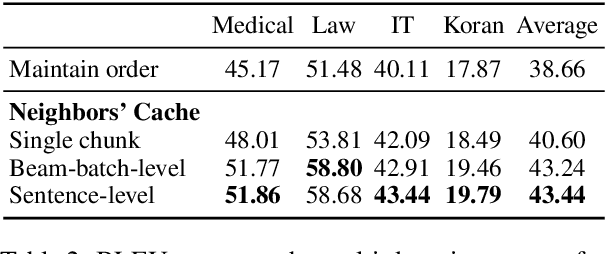
Abstract:Semi-parametric models, which augment generation with retrieval, have led to impressive results in language modeling and machine translation, due to their ability to leverage information retrieved from a datastore of examples. One of the most prominent approaches, $k$NN-MT, has an outstanding performance on domain adaptation by retrieving tokens from a domain-specific datastore \citep{khandelwal2020nearest}. However, $k$NN-MT requires retrieval for every single generated token, leading to a very low decoding speed (around 8 times slower than a parametric model). In this paper, we introduce a \textit{chunk-based} $k$NN-MT model which retrieves chunks of tokens from the datastore, instead of a single token. We propose several strategies for incorporating the retrieved chunks into the generation process, and for selecting the steps at which the model needs to search for neighbors in the datastore. Experiments on machine translation in two settings, static domain adaptation and ``on-the-fly'' adaptation, show that the chunk-based $k$NN-MT model leads to a significant speed-up (up to 4 times) with only a small drop in translation quality.
Efficient Machine Translation Domain Adaptation
Apr 26, 2022

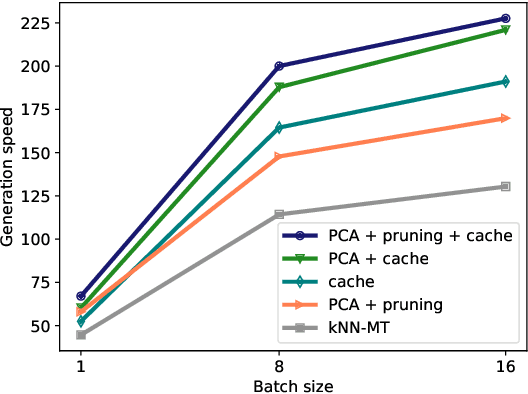
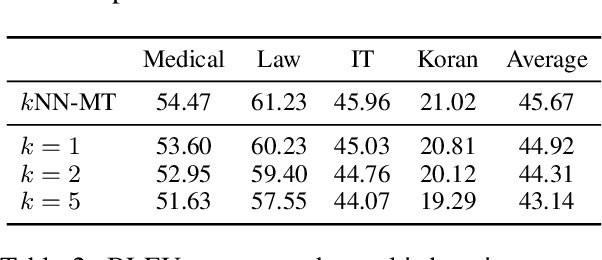
Abstract:Machine translation models struggle when translating out-of-domain text, which makes domain adaptation a topic of critical importance. However, most domain adaptation methods focus on fine-tuning or training the entire or part of the model on every new domain, which can be costly. On the other hand, semi-parametric models have been shown to successfully perform domain adaptation by retrieving examples from an in-domain datastore (Khandelwal et al., 2021). A drawback of these retrieval-augmented models, however, is that they tend to be substantially slower. In this paper, we explore several approaches to speed up nearest neighbor machine translation. We adapt the methods recently proposed by He et al. (2021) for language modeling, and introduce a simple but effective caching strategy that avoids performing retrieval when similar contexts have been seen before. Translation quality and runtimes for several domains show the effectiveness of the proposed solutions.
$\infty$-former: Infinite Memory Transformer
Sep 15, 2021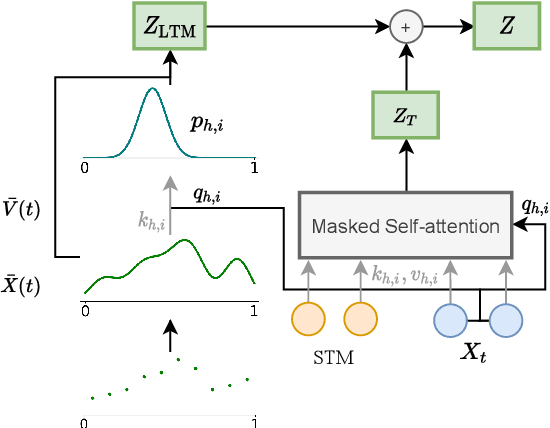
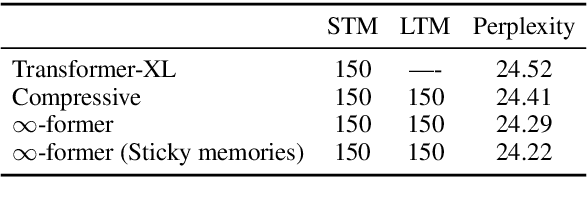


Abstract:Transformers struggle when attending to long contexts, since the amount of computation grows with the context length, and therefore they cannot model long-term memories effectively. Several variations have been proposed to alleviate this problem, but they all have a finite memory capacity, being forced to drop old information. In this paper, we propose the $\infty$-former, which extends the vanilla transformer with an unbounded long-term memory. By making use of a continuous-space attention mechanism to attend over the long-term memory, the $\infty$-former's attention complexity becomes independent of the context length. Thus, it is able to model arbitrarily long contexts and maintain "sticky memories" while keeping a fixed computation budget. Experiments on a synthetic sorting task demonstrate the ability of the $\infty$-former to retain information from long sequences. We also perform experiments on language modeling, by training a model from scratch and by fine-tuning a pre-trained language model, which show benefits of unbounded long-term memories.
The GEM Benchmark: Natural Language Generation, its Evaluation and Metrics
Feb 03, 2021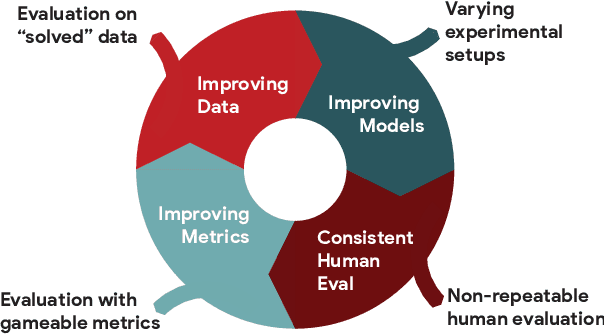
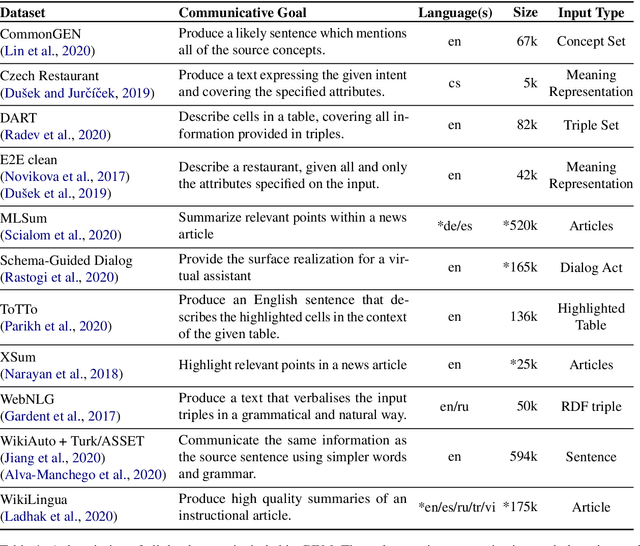
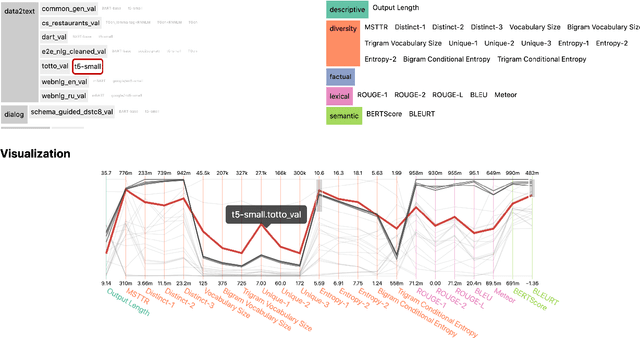
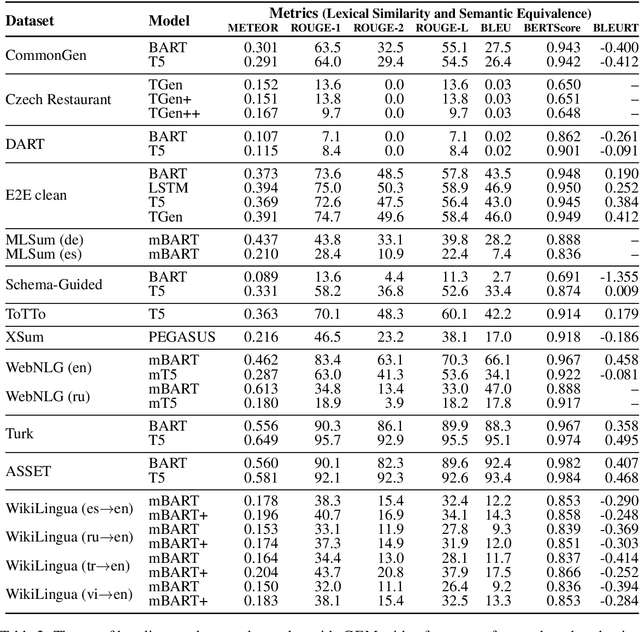
Abstract:We introduce GEM, a living benchmark for natural language Generation (NLG), its Evaluation, and Metrics. Measuring progress in NLG relies on a constantly evolving ecosystem of automated metrics, datasets, and human evaluation standards. However, due to this moving target, new models often still evaluate on divergent anglo-centric corpora with well-established, but flawed, metrics. This disconnect makes it challenging to identify the limitations of current models and opportunities for progress. Addressing this limitation, GEM provides an environment in which models can easily be applied to a wide set of corpora and evaluation strategies can be tested. Regular updates to the benchmark will help NLG research become more multilingual and evolve the challenge alongside models. This paper serves as the description of the initial release for which we are organizing a shared task at our ACL 2021 Workshop and to which we invite the entire NLG community to participate.
Sparse Text Generation
Apr 06, 2020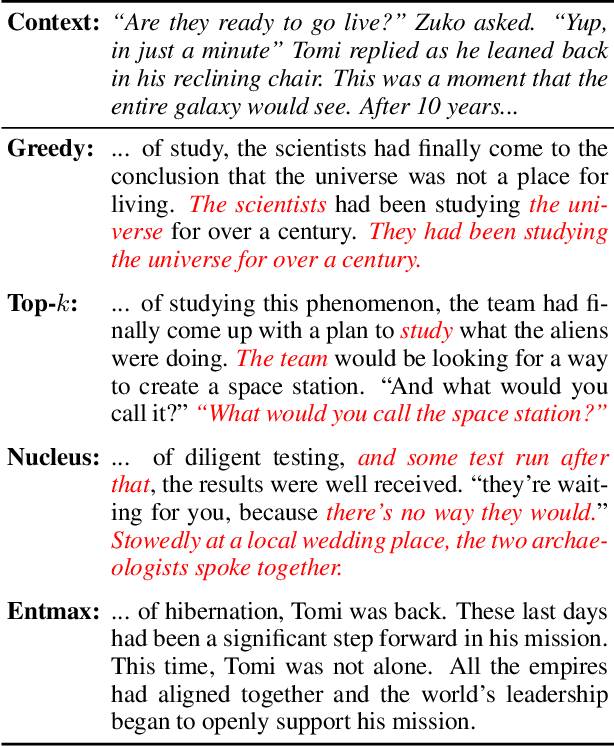
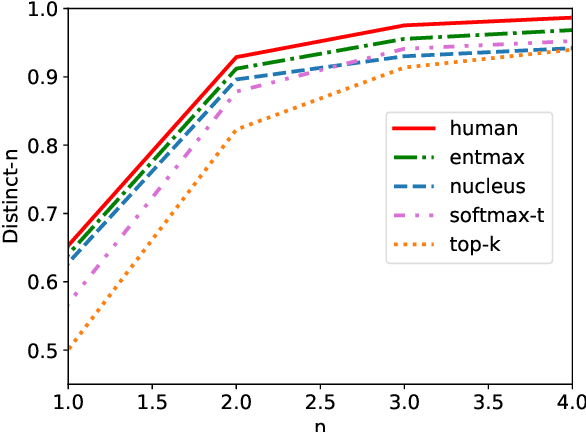

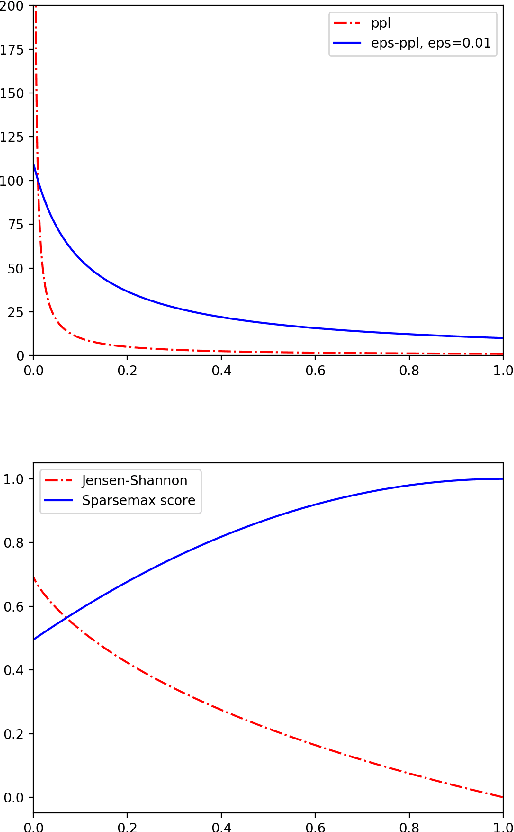
Abstract:Current state-of-the-art text generators build on powerful language models such as GPT-2, which have impressive performance. However, to avoid degenerate text, they require sampling from a modified softmax, via temperature parameters or ad-hoc truncation techniques, as in top-$k$ or nucleus sampling. This creates a mismatch between training and testing conditions. In this paper, we use the recently introduced entmax transformation to train and sample from a natively sparse language model, avoiding this mismatch. The result is a text generator with favorable performance in terms of fluency and consistency, fewer repetitions, and n-gram diversity closer to human text. In order to evaluate our model, we propose three new metrics that are tailored for comparing sparse or truncated distributions: $\epsilon$-perplexity, sparsemax score, and Jensen-Shannon divergence. Human-evaluated experiments in story completion and dialogue generation show that entmax sampling leads to more engaging and coherent stories and conversations.
Sparse and Structured Visual Attention
Feb 13, 2020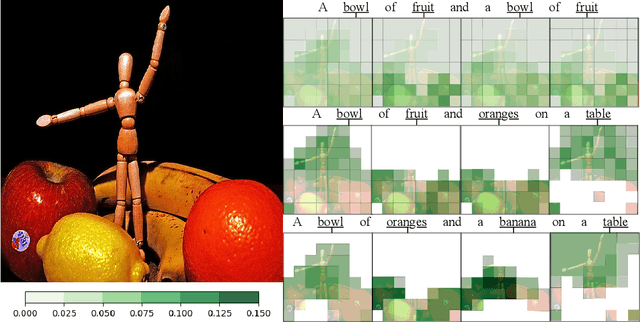

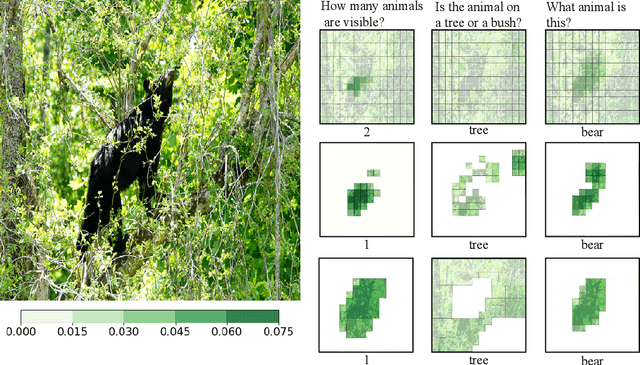

Abstract:Visual attention mechanisms are widely used in multimodal tasks, such as image captioning and visual question answering (VQA). One drawback of softmax-based attention mechanisms is that they assign probability mass to all image regions, regardless of their adjacency structure and of their relevance to the text. In this paper, to better link the image structure with the text, we replace the traditional softmax attention mechanism with two alternative sparsity-promoting transformations: sparsemax, which is able to select the relevant regions only (assigning zero weight to the rest), and a newly proposed Total-Variation Sparse Attention (TVmax), which further encourages the joint selection of adjacent spatial locations. Experiments in image captioning and VQA, using both LSTM and Transformer architectures, show gains in terms of human-rated caption quality, attention relevance, and VQA accuracy, with improved interpretability.
Joint Learning of Named Entity Recognition and Entity Linking
Jul 18, 2019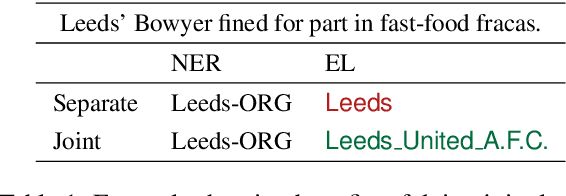


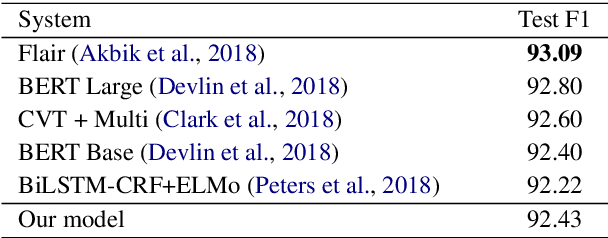
Abstract:Named entity recognition (NER) and entity linking (EL) are two fundamentally related tasks, since in order to perform EL, first the mentions to entities have to be detected. However, most entity linking approaches disregard the mention detection part, assuming that the correct mentions have been previously detected. In this paper, we perform joint learning of NER and EL to leverage their relatedness and obtain a more robust and generalisable system. For that, we introduce a model inspired by the Stack-LSTM approach (Dyer et al., 2015). We observe that, in fact, doing multi-task learning of NER and EL improves the performance in both tasks when comparing with models trained with individual objectives. Furthermore, we achieve results competitive with the state-of-the-art in both NER and EL.
 Add to Chrome
Add to Chrome Add to Firefox
Add to Firefox Add to Edge
Add to Edge